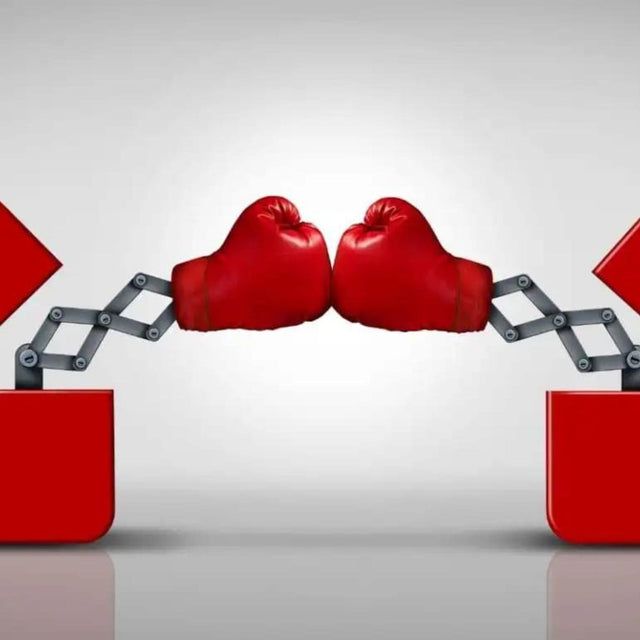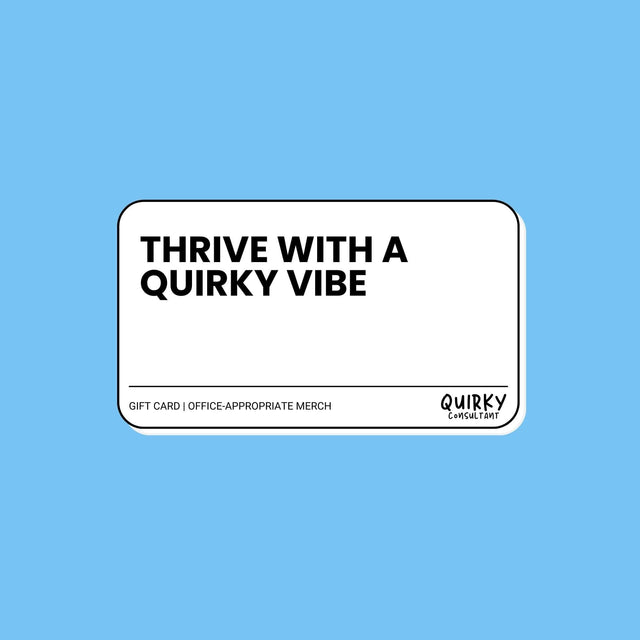Understanding the necessity of and taking calculated risks

This article was written by Benjamin Davison.
Risk. More than just a competitive board game for family game night, it’s a real and pernicious phenomenon. Indeed, no activity in life comes without risk. Driving to work in the morning is a risk. Investing in that new tech company is a risk. Not seeing your doctor about that nagging pain is a risk. Having a kid, getting married, starting a business, or even commenting on that annoying social media post all involve risk. It seems like the only way to avoid risk altogether is to just sit on the couch and do nothing, but as it turns out, even inertia is risky.
But what even is risk? How does risk play out in the context of business and entrepreneurship? How can one calculate relative risk and use that knowledge to make better decisions in business and life? Risk as an intellectual and mathematical concept can get pretty deep, but anybody who wants to enjoy success in life needs to develop an adequate understanding of what risk is, how we can assess it, and how we can turn that assessment into actionable information.
What is risk?
Risk is a concept with many faces. One can describe risk, as Merriam Webster does, as the possibility of injury or loss. In business terms, risk usually means some kind of financial loss. You might invest massive amounts of capital into a new project only for it to fail completely, take on an unsustainable debt burden, or invest in something that collapses after abrupt or unforeseen changes in market conditions, such as those occurring in the wake of COVID-19. Risk lurks behind every business decision.
Risk can be thought of in terms of positive risk and negative risk. Positive risk might come as the opportunity to open a new business, make a new capital investment, or purchase some kind of financial security. Opportunities bring two basic kinds of risk to the table. First, every opportunity to succeed is also an opportunity to fail. Even in sectors where market conditions heavily favor business success, success is never guaranteed. Second, pursuing an opportunity generates an opportunity cost for other pursuits as it consumes time and resources that are not recoverable. If you devote five FTEs and a million dollars to a project that goes down in flames, those person-hours and dollars are never coming back.
Negative risk can be thought of as the threat of inaction. If there is a new trend in your sector and you decide not to take action on it, you may find yourself outpaced by more open-minded competitors. If you choose not to manufacture that new product or make that new application, and a competitor manages to make scads of money on something you only thought about, your inaction costs you potential earnings.
This is similar to but different from an opportunity cost. Opportunity cost is another form of risk that is incurred by your decision to take a specific action. Taking any action immediately impacts your ability to take contrary actions. When you’re looking into graduate schools, accepting admission into Program A means you cannot attend Program B. By committing to one course of action, you have also committed to not taking another course of action, and you will likely never have that opportunity again. Indeed, whether you take action or do nothing, the mere act of existing seems to incur unavoidable risks.
What happens if we don’t take risks?
Risk is scary. Risk means that there is a potential for loss. You might lose money, your job, or cash out your savings for nothing. You might spend five years in a degree program and find out there’s no job market. You might buy an investment at the market’s peak and watch in horror as it decreases in value, launch a new product that everybody hates, or otherwise end up failing and feeling humiliated and depressed.
But what’s the alternative? The growth of any business is related to risk. If you never take the risk of hiring a new employee, expanding into a new niche, or launching an up-to-date product, you’re confining your business and shortchanging your opportunities. If you fail to take risks, you’ll be outpaced by competitors who do. Borders, the bookstore, famously went out of business after failing to respond to a changing marketplace or diversify its offerings. Borders’ leadership did not want to confront the changing marketplace and stubbornly dug in, refusing to take the risks inherent in growth and ultimately dooming their company to failure and collapse. Xerox’s senior leadership infamously decided that bringing their novel technologies of the computer mouse and GUI to market wasn’t worth the risk. This decision consigned them to copiers and faxes forever.
"The only constant in life is change." – Heraclitus
Failure to take calculated risks implies that you’re content with the status quo. Maybe the status quo is good: perhaps you’re operating profitably and are happy with the position of your business. If that’s the case, congratulations! Enjoy it while it lasts because the only constant in life is change. If the world changes around you, but you just keep doing what you’re doing, you’re likely to find your business stagnant. Companies focusing on maintenance rather than growth tend to evolve into top-heavy bureaucratic nightmares that inevitably fail to compete in an ever-changing marketplace. Taking a calculated risk is an excellent way to either grow your business or learn a valuable lesson.
Taking risks and losing
Risk might drive positive change, but it can also harm your business. As a dramatic example, consider that Lloyd’s of London took a calculated risk when they insured the Titanic. The Titanic famously collided with an iceberg and sank, causing Lloyds to pay out more than a million pounds in losses on a £7,500 premium – still one of the biggest losses the company has ever suffered. A more modern example of a risk that did not work out well would be NewsCorp’s $580 million acquisition of MySpace in 2005, just before the launch of Facebook, which completely crushed MySpace.
How do you deal with the possibility of failure? Failure is a frightening idea. None of us like to be wrong, to lose money, or to lose face, and these things often characterize failure. We fear failure and its consequences. The idea of failing might be scary enough to convince you not to take risks. The best way to move on from a fear of failure is to reframe failure. Stop thinking of failure as a permanent, negative state. Failure is a temporary set of circumstances. Failing in business does not mean you have failed as a person. Instead, think of failure as an opportunity to learn a lesson. Early aviation pioneers endured countless brutal crashes, but instead of giving up entirely, they learned from their failures and moved on. Reframing the possibility of failure as an opportunity to gain valuable experience and learn important lessons will help you embrace risk.
That said, it’s not wrong to realize that failure is very much an option. Consider the various failure modes of whatever risky situation you’re analyzing, and then consider what drove those failures. What elements of that dynamic can you take control of to mitigate the risk? A detailed and analytical examination of your dilemma will help you make a rational choice.
Assessing risk: a thought experiment
So how can one make good decisions in the face of endless and pervasive risk? Understanding how to assess risk is critical when operating any kind of business. While entire textbooks have been written on assessing risk in the business environment, we’ll condense it to a few paragraphs here.
The simplest way to think of risk is as a form of harm. The harm may be financial, as in monetary losses; reputational, as in the damages coming to any fossil-fuel heavy concern in the face of pending climate disasters; or tangible, in the form of injured customers or employees.
Harm, naturally, stems from hazards. Suppose your business location has a hazardous condition, such as a poorly constructed front step. In that case, that hazard poses the risk of harm: when your customer trips on the step and falls through your plate-glass door, you will face liability and potential litigation. If physical hazards are inherent to your product or service – perhaps you operate a skydiving business or sell fireworks – your customers may suffer injuries. If your new product line is in a highly competitive market sector, there are hazards associated with failing to act with speed or precision. Identifying hazards is the first step in assessing risk.
Once you have identified the relevant hazards, you should decide who might be harmed and how the harm might occur. What is the nature of the potential harms facing your customers? Are they likely to face financial harm? Might they become physically injured? Could their business suffer property damage or data loss?
After evaluating possible harm, you should decide what kind of precautions you need to take. If your front stoop is hazardous, put up a sign. If your business involves inherently risky activities like skydiving, firing guns, bouncing on trampolines, or riding horses, consult an attorney and develop a waiver process. This simple three-step assessment metric can also apply to more abstract business decisions by identifying hazards, harms, and precautions.
Risky business
In the context of making a business decision, identifying hazards means analyzing the decision from every angle. Think critically about the situation you’re analyzing and ask yourself, where are the hazards? How could this go wrong? Perhaps you’re considering switching to a new vendor. Hazards might include inferior products, unforeseen incompetence, or even the collapse of the vendor’s (or your) supply chain. Other hazards might include consumer dissatisfaction with the change. The new vendor could go out of business. With just a few moments of thought, you should be able to identify several possible hazards inherent in almost any decision. Write down the possible hazards.
Now, think about where the harm lies in each of those hazards. Generally, in a business decision, the ultimate harm comes as either financial or reputational damage. In simpler terms, the company could lose money, resources, or clout. How would this play out? What would that look like? Sometimes, the harm could lie with the consumer, leading to reputational and possibly financial losses for your company. Other times, the harm could be direct and internal: increased expenses, production delays, or logistical kerfuffles. Who is harmed? How? How does that harm affect the company?
(Sidebar) The hazard of inaction: Subway and Jared Fogle
No matter how much you try to war-game risk, hazards can appear in unexpected cases. In 2000, Subway launched a new advertising campaign that featured Jared Fogle as its spokesman. Fogle claimed to have lost 245 pounds by eating Subway sandwiches, which led the company to embrace Fogle and make him the face of the brand. This worked great until 2015 when Fogle was arrested and sent to federal prison on child sex charges. As it turned out, Subway allegedly knew about Fogle’s illicit activities and sketchy behaviors and determined that the risk of firing him and turning him in exceeded the risk of continuing to employ him and using him as a marketing gimmick. Subway, it seems, did not correctly analyze the risks of Fogle’s continued association with the brand. While Fogle’s behavior is not the only factor contributing to the sandwich giant’s slow sunset, it undoubtedly impacted the brand’s reputation.
Now that you’ve identified hazards and harms, ask yourself: how can I mitigate them? Are there less risky ways to achieve business objectives? What is the likelihood of each possible outcome, and how could a savvy entrepreneur prevent the worst-case scenario from actualizing? It’s possible to think these questions to death: consider the insurance industry, which is filled with statisticians and actuaries who eat, sleep, and breathe in the world of risk, spending entire careers devising ways to keep the insurer’s financial losses to a minimum. Since most small businesses don’t have a statistician or an actuary available, the best way to mitigate risk is to bring in key players and have a serious, open-minded discussion about the problem.
Tips for talking about risk
Having reasonable, level-headed discussions about risk in any business enterprise is important. But how can you talk about risk without becoming mired in details or veering into pure fantasy?
Remember your why
Why are you taking this risk? Is it to improve value for your customers or maybe to optimize your operations? Or are you taking a risk because of the temptation of easy money? Framing the problem in terms of your reason for being will give you a new perspective on risk.
Don’t be an optimist, but also don’t be a pessimist
It’s easy to make rosy projections and assume everything will be OK, and it’s just as easy to shoot down any idea that’s floated cynically. Be realistic. Things can go wrong, and failing to plan is planning to fail.
Use meaningful data
Whether you’re evaluating sales of cinnamon rolls versus ciabatta bread, evaluating bounce rates, or calculating the likely return on a new investment, get the best data you can. Beware of simple, surface-level data points like you might see in headlines or news stories. Look for deep, detailed data to help you think about risk.
Think stepwise
Is there a way to take smaller, incremental risks instead of taking one huge risk?
Get granular
Traditional business analysis often relies on high-level conceptual considerations, often expressed through tools like heat maps. Contemporary business thinkers, however, believe that a more granular approach is better in today’s fast-paced market. A company might misjudge its risks if they don’t consider the details excluded from big-picture thinking. Grouping entities like “customers” together in one huge amalgamation is a mistake, for example, because you likely have many kinds of customers who comprise varying amounts of your business. Similarly, “logistics” is a very broad category that is not well-served to being reduced to one grouping.
To solve this problem, you should get granular with your data. Figure out where your profits come from by using modern risk analysis techniques. If 15% of your customers drive 75% of your profits, consider risks adjacent to those customers. What could disrupt your business relationship and injure those customers? If your product relies on three shipments of materials a week that each come from separate origin points and arrive on different trucks, think carefully about how you might respond to the myriad of problems that can arise from complex supply chains.
The “calculated” part
When talking about calculated risk, we generally do not mean that we’ve made literal calculations – but why not? Risk is relatively simple to model mathematically. One of the most useful models when calculating risk scenarios is the concept of expected value. Expected value is one of those rare terms that is exactly what it sounds like: it is the value you would expect an asset or investment to have at some given point in time.
Finding the expected value involves just a little bit of math. As it turns out, those sixth-grade teachers who said we’d need math someday were actually right. While expected value might sound like a complex idea, you only need to know the order of operations and basic arithmetic to solve it, making it a simple and excellent tool for evaluating risk.
To find the expected value, you multiply each possible outcome by its probability and then sum those values. That’s a mouthful, so let’s break it down. First, we’ll assume your business problem has four possible outcomes: A, B, C, and D.
Outcome A: 15% chance, $100,000 profit.
Outcome B: 25% chance, $50,000 profit.
Outcome C: 50% chance, $15,000 profit.
Outcome D: 25% chance, -$5,000 profit.
Each outcome has a probability and a financial impact. When you use probabilities in math, they’re expressed as decimals; 15% is 0.15, 25% is 0.25, and so on. Now that we have our outcomes described, we multiply each outcome’s probability and financial impact:
Outcome A: 0.15 X $100,000 = $15,000
Outcome B: 0.25 X $50,000 = $12,500
Outcome C: 0.5 X $15,000 = $7,500
Outcome D: 0.25 X -$5,000 = $-1,250
Now, we add those numbers together. The grand total ends up being about $33,750, which means that – assuming our probabilities are accurate and our projections are correct – we’d be likely to make $33,750 or so. In other words, it is probably a decent investment to make! However, there are two important caveats here:
- This is a model. It is not necessarily an accurate reflection of reality.
- Any model is only as good as the data you feed it.
In other words, this technique only works when you have accurate probabilities and financial impacts. But the world is incredibly complicated: knowing the exact probability of a specific truck going off the road or the probability of a product being successful among a given demographic is very difficult unless you have access to mountains of data and solid machine-learning technology. In an ideal world, we could use precise mathematics to model the probability of success or failure in any given risk scenario. Our world, however, is far from ideal. The grit of uncertainty and unpredictability taints even our most beautiful mathematical models. Ultimately, in the absence of authoritative data, we’re all just winging it with varying degrees of certainty. Business decision-making has much more subjectivity than people want to believe.
Getting accurate probabilities
The mathematical engine at the heart of the expected value is probability. But how do you get a realistic probability? It’s easy to say, “Outcome A has a 15% chance of occurring,” but in the absence of empirical data, how can one confidently make such an assertion? Without empirical data, isn’t any probability just a wild guess?
Yes! Without data, a guess is just a guess. The key to success in getting accurate probabilities is to use as much data as you can. In today’s world, that is easier than ever. Many modern point-of-sale systems offer decent data-tracking capabilities that can show you who your customers are, what they like, and what their habits are. POS systems can tie in with inventory tracking systems to help you optimize your inventory management. Higher-end POS systems will even integrate sales data into marketing-friendly tools like MailChimp that can help you connect with your customers in a more targeted way. Tech giants like Facebook and Google can provide advertisers with valuable insights into their consumers’ preferences, mindsets, and likely future behavior.
What does all of this have to do with getting accurate probabilities? Using your data to make predictions is a more grounded way to approach a problem than simply winging it with high-concept abstractions. Suppose your sales data show that fall brings an uptick in sales of your gourmet cherry-flavored bees-wax chapsticks and a drop in pina-colada flavored bees-wax chapsticks. In that case, you can use that information to forecast demand and make appropriate operational decisions.
Forecasting
Forecasting is an intimidating and abstract subject, but it is one that any businessperson should become familiar with. Small businesses with limited resources can still engage in basic forecasting. The process of forecasting is essentially taking known quantities from past experiences and comparing them to the present situation. If the fed drops interest rates, past market behavior would be used to predict future market behavior: generally, a drop in interest rates increases borrowing and investing. In terms of forecasting, this could increase consumer purchasing power and be a positive sign for businesses looking to grow.
The easiest place to begin is cash flow forecasting: an organized business will have plenty of information and details about its cash flow, and at the end of the day, cash is the lifeblood of any business. Cash flow forecasting should include past data about seasonality, ebbs and flows, payment delays, expenses, interest, and other relevant information. Look for patterns and trends, and map out how often they occur. If a specific time of year brings a bump to your sales 70% of the time, that’s an actionable number you can plug into a model.
While data is good, be sure not to go too far out into the weeds. Correlation and causation make tempting bedfellows, but they are not always related. There are plenty of excellent examples of unlikely correlations. For example, per-capita cheese consumption roughly tracks the number of people who die by getting tangled in their sheets. The divorce rate in Maine follows the per-capita consumption of margarine. However, these variables are almost certainly unrelated. Use your head.
Taking the plunge: make your risk real
"A man who carries a cat by the tail learns something that can be learned in no other way." – Mark Twain
Taking a calculated risk is the same as taking any other action as a business. It requires careful planning, detailed goal-setting, and close attention. One cannot simply march out of the conference room and bellow out a new plan or strategy ala Michael Scott. But you also don’t have to have seven alphabetized three-ring binders with color-coded cross-referenced sticky notes and to-the-second itineraries. Here is a realistic approach to engaging in risky business.





0 Comments
Nobody's told us there thoughts about this article. Tell us yours below.